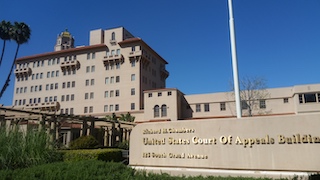On July 25, 2001, Craig P. Orrock, a former Internal Revenue Service attorney, persuaded his friend, Roger Thompson, to purchase a vacant lot in Nevada, known as the “Arville” property.
Thompson purchased the property for $80,000 and, at Orrock’s direction, transferred ownership to Arville Properties, LLC, a company set up by Orrock and managed through another entity solely owned by Orrock.
On February 21, 2007, Orrock, through Arville Properties, sold the Arville Property for $1.5 million. In Orrock’s 2007 personal tax return, which Orrock filed on February 19, 2009, he did not report any income from the Arville property sale.
In February 2011, an IRS revenue agent began a civil audit of Orrock’s 2007 personal tax return.
In May 2011, Orrock filed a tax return for Arville Properties, reporting a sale price of about $1.4 million and a tax basis of about $1.2 million and a gain of only $200,000. In reality, the sale was for $1.5 million and only had a basis of about $90,000.
On April 12, 2016, a grand jury indicted Orrock on three tax felonies: 1) evasion of the payment of taxes under 26 U.S.C. § 7201; 2) evasion of assessment of taxes also under § 7201; and 3) obstruction of the administration of tax laws under § 7212(a). The government contended Orrock received $914,433 in taxable income from the sale. Such income would lead to a $314,483 tax liability for Orrock. In Orrock’s 2007 personal tax return he did not report this at all.
The Tax Code makes it a felony to “willfully attempt in any manner to evade or defeat any tax . . . or the payment thereof.” 26 U.S.C. § 7201. A person may violate § 7201 in two ways: (1) by evading the assessment of taxes or (2) by evading the payment of taxes. See United States v. Mal (9th Cir., 1991) 942 F.2d 682, 689 (“[Section] 7201 proscribes a single crime – tax evasion – which can be accomplished either by evading the assessment of tax or the payment of tax.”).
To obtain a conviction under § 7201 under either theory, the government must prove three elements: “1) the existence of a tax deficiency; 2) willfulness; and 3) an affirmative act of evasion or affirmative acts to evade.”
United States v. Carlson (9th Cir., 2000) 235 F.3d 466, 468.
A jury later convicted Orrock on all three offenses.
Orrock moved pretrial to dismiss the evasion of assessment count based on the six year statute of limitations (26 U.S.C. § 6531(2)), arguing that more than six years passed from Orrock’s February 19, 2009, personal tax return filing and the April 12, 2016 indictment. The district court denied his motion, holding that because the government sufficiently alleged that Orrock committed an affirmative act on evasion in May 2011 with the filing of the Arville Properties tax return, the indictment fell within the six-year statute of limitations.
 U.S. Ninth Circuit Court of Appeals Pasadena
U.S. Ninth Circuit Court of Appeals Pasadena
After Orrock’s conviction, Orrock appealed the denial of his motion to dismiss on statute of limitations grounds to the U.S. Court of Appeal for the Ninth Circuit in San Francisco. Even though the case arose in Nevada in U.S. District Court, it falls within the Ninth Circuit, so the ruling in this case would control similar conduct and the same issue in California.
On appeal, Orrock argued that any further act of evasion, such as his filing of the Arville Properties tax return in May 2011, cannot extend the limitations period. If Orrock’s interpretation was correct, the limitations period expired in February 2015 and the indictment in March 2016 was more than 13 months too late.
The government opposed Orrock’s argument by stating that the limitations period can run from the last affirmative act furthering the tax evasion, meaning the May 2011, meaning the government’s filing of the indictment was 13 months prior to the expiration of the six-year limitations period.
The Ninth Circuit sided with the government’s interpretation, pointing to the May 2011 return as a further affirmative act of evasion, so the statute of limitations was not exceeded.
The ruling from the United States Court of Appeals for the Ninth Circuit discussed above is United States v. Craig P. Orrock (9th Cir, 2022), however, the ruling is marked as “Not for Publication,” so it may not be cited directly as authority.
For more information about common issues in federal court involving financial crimes, please click on the following articles:
We bring this article to the reader’s attention, as tax evasion is a complex area of the law, but his reported decision is relatively clear to understand.
 U.S. Ninth Circuit Court of Appeals Pasadena
U.S. Ninth Circuit Court of Appeals Pasadena